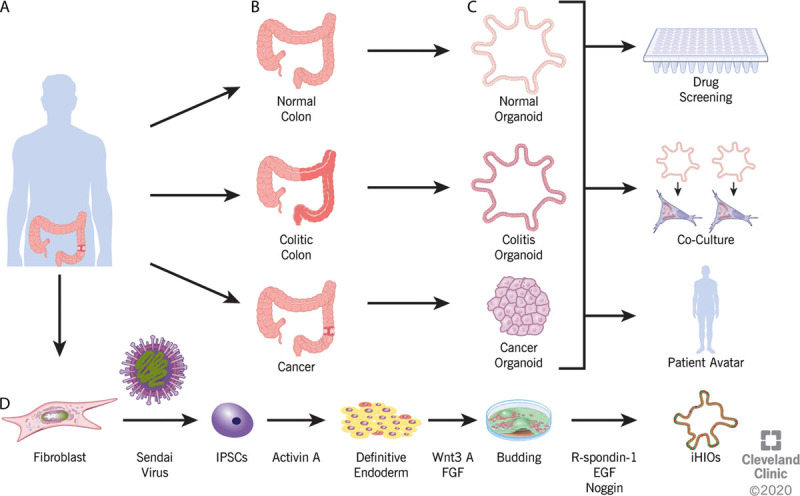FIGURE 2.

Organoid generation. A, B, Specimens are obtained from patients via either surgical resection or endoscopic biopsy. Specimens as small as 1 mm3 have been used to obtain viable organoids. C, The organoids generated will recapitulate the phenotype of the tissue sampled, be it normal, colitic, or malignant. The organoids can be used for various downstream analyses, including drug screening, genomic analysis, transcriptional analysis, or to derive a patient avatar that allows the testing of varying treatment strategies for either IBD or malignancy on patient-specific samples. D, Induced human intestinal organoids can be generated from colon fibroblast, skin fibroblast, or blood. Sendai virus containing the Yamanaka factors is used to reprogram the differentiated cell back to a pluripotent state. Through treatment with a series of various factors, induced pluripotent stem cells (IPSCs) undergo directed differentiation to definitive endoderm, then buds, and finally progress to an induced human intestinal organoid. EGF = epidermal growth factor; FGF = fibroblast growth factor; iHIO = induced human intestinal organoid.
